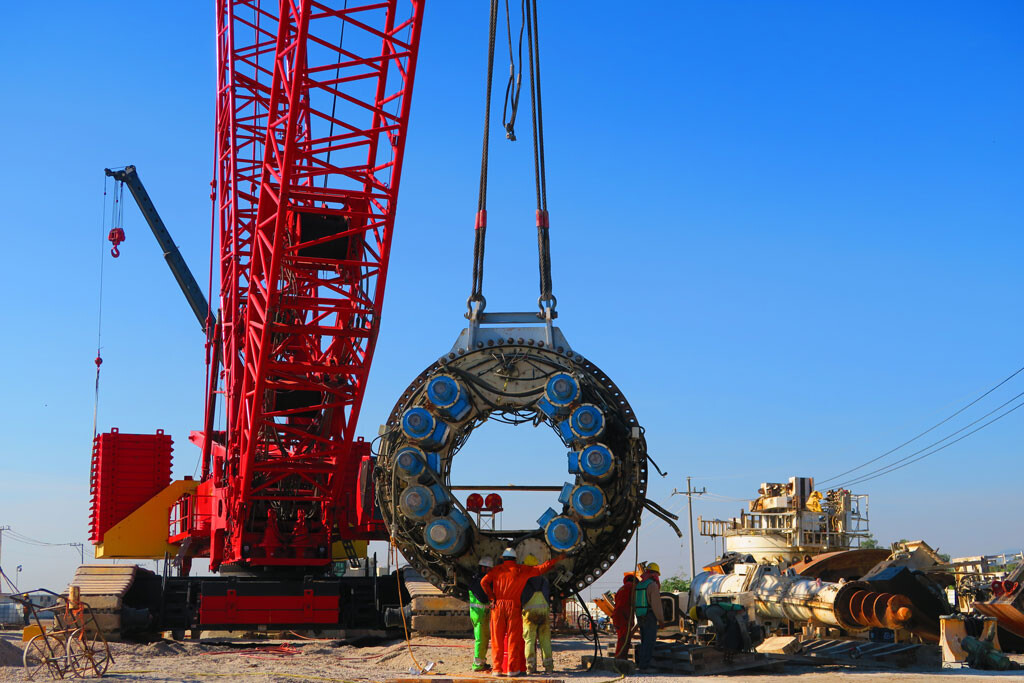Cority recently hosted a webinar with the National Safety Council on the topic of Behavior-Based Safety and the effectiveness and value of this controversial safety methodology. Judy Agnew, Senior Vice President of Aubrey Daniels International, provides answers below to some of the great questions from audience members we didn’t have time to cover during the webinar.
At what point should it be evident that a change in your current Behavior-Based Safety program needs to be implemented, even when most feel that it is already successful?
The first step is to define what ‘success’ looks like. Ideally, you will have some leading indicators and lagging indicators that will help you know when you need to make adjustments. Avoid using people’s feelings or gut reactions as your primary indicators. For example, many people believe that incentives for lack of accidents are effective when they have clearly been proven to be problematic. Look to hard evidence to determine whether you need to change.
Can companies who have already begun BBS programs without adequate consideration for systems get on track and find success?
Absolutely, any good BBS process should evolve and improve over time. Invite all employees to discuss how to better consider systems and start to integrate changes. The fact that you are asking and willing to make changes will speak volumes to employees who might be skeptical of the process.
What are the best leading and lagging indicator dashboards for BBS?
This depends on how you collect your BBS data, but good leading indicators include some form of ‘percent safe’, ideally by behavior (e.g., putting on fall protection) or type of behavior (e.g., PPE use), and also a measure of hazard remediation such as percent of hazards addressed within X days. I would also recommend a metric around leader behavior. That metric will depend on what you ask your leaders to do as part of your BBS process. It could be doing observations, it could be attending safety meetings to discuss BBS progress, or it could be tasks related to hazard mitigation.
Participation metrics can be good, but be careful of quotas for doing observations. Quotas are usually driven by negative reinforcement and can lead to pencil whipping. For lagging indicators, I recommend reduction in certain categories of incidents. For example, if you have a lot of strains and sprains and your BBS checklist is targeting behaviors related to avoiding strains and sprains, then you should track the number of strains and sprains over time. Safety culture surveys can also be good indicators of broader culture change as a result of BBS. Finally, near miss reporting can provide an indicator of people’s willingness to talk about safety openly and honestly.
How is BBS used to investigate employee caused injuries or accidents?
It is not BBS per se, but rather the science of behavior that can help during investigations. Any time an investigation points to human error, whether that be a frontline employee or a supervisor/manager, it’s imperative to ask why. Why would an otherwise good employee engage in an at-risk behavior? What antecedents (things that prompt you to engage in a behavior) and consequences (what happens as a result of engaging in a particular behavior) may inadvertently be supporting such behavior (e.g., heavy push on production, being short-handed)? Remember antecedents rarely lead to permanent behavior change so don’t fall into the trap of saying “they were trained, they had the procedure, they should have known better”.
When you find yourself saying these things is precisely when you should ask, “so why, given they knew better, would they do it anyway?” Look at the immediate and certain consequences (they often aren’t obvious) and you will find the answer. Then you can focus on changing the consequences and that will ultimately change the behavior.
Our Project used a short form to record observations and we collated these by department. Audits revealed that some supervisors “pencil whipped” their observations to make their department look good and to receive recognition. Is this a common issue with BBS and how can you overcome this?
Whether it is supervisors pencil whipping forms to look good, or frontline employees pencil whipping forms to avoid getting in trouble, it is important to be alert to pencil whipping and avoid setting up circumstances that inadvertently encourage it. Avoid large rewards or elaborate recognition for data that suggests good performance, and also avoid negative consequences for data that suggests bad performance. The best kinds of consequences are those that help people see the impact of what they are doing. For supervisors, rather than praising them in a large group meeting for having a good score, have a one-on-one discussion about how their observations went, what they learned, what kind of conversations they had. This gets at the heart of why we should be doing observations and helps supervisors to see the value in doing them.
Is it acceptable to list ‘unsafe act’ or ‘at risk behavior’ as an incident cause?
Not without answering why the at-risk behavior occurred and whether or not others are likely to do the same. The whole point of investigations is to prevent similar incidents from happening. Very often if one person is doing an at-risk behavior, others are as well because the consequences in the work environment encourage it in some way. Find those consequences and change them and you are more likely to prevent similar at-risk behaviors and thus incidents.
How important is it for employees at all levels of the organization to be made aware of and able to assess hazards in the workplace?
Ideally, everyone in an organization is able to identify hazards, but if not, it is something that can be shaped over time. As I mentioned during the webinar, once people start doing behavioral observations, they often become more alert to hazardous conditions as well. Joint observations are a great opportunity to do some just-in-time training in hazard recognition.
Do other companies put quotas on safety observations and if so, what’s the benefit?
Yes, some do but we don’t encourage it because as mentioned before, quotas usually end up being managed with negative reinforcement and can lead to pencil whipping. The reason people put quotas on observations is to encourage observations. It’s always better to do that with positive reinforcement. Talk to people about their observations and how they are helping, show them the impact their observations are having, ask them if doing observations on others makes them personally behave more safely (the research shows that it does). Issuing a quota and then just managing the numbers will undermine the effectiveness of your behavior-based safety process. Focus on quality and impact, not quantity.
We have invested a lot on BBS for our Construction site, but in the end we concluded that it was more beneficial to improve the overall skills of the supervisor to improve overall performance. Do you have any studies developing supervisor skills?
I am not aware of any studies, but we at ADI often recommend exactly that approach to our clients who have a fluctuating or transient workforce. The supervisor is often the only consistent person on the job site over time so if you train and coach your supervisors in having frequent, meaningful, and largely positive interactions with frontline employees around critical safe behaviors, you will definitely see improvement. Regardless of your industry, it may be worthwhile to read, A Supervisor’s Guide to (Safety) Leadership as supervisors play such a critical role in ensuring safe behavior at the frontline.
There were several additional questions related to construction and transient workforces, and the other recommendation we make for such circumstances is to identify a short list of the most critical behaviors for those workers. Use any incident and/or near miss data you have to narrow your focus on the types of injuries those workers are likely to experience and then conduct lots of observations on the targeted behaviors while those workers are on site. For example, if ladder use is a frequent requirement and you have experienced a lot of incidents related to ladder use, identify some critical safe behaviors around ladders, clearly spell them out to all workers who arrive on site, and follow up with frequent observations, feedback and consequences. This kind of targeted observation will often be more effective than trying to observe for every possible safe behavior.
During the webinar you mentioned that it’s not only front line workers who “behave.” Are there examples of a system that includes managers “observing” whether the observers are completing their observations, “observing” whether engineers are including engineering controls in process designs, etc.?
Absolutely! In the behavior-based safety system we help our clients implement, managers have scorecards with a list of leader behaviors they should engage in to support BBS and safety in general. It always includes positively reinforcing observers for doing observations, and also always includes behaviors related to hazard remediation. The same goes for engineers—they have scorecards that include things like talking with operators as they design equipment. Everyone in the organization that impacts safety should have a scorecard with their critical behaviors listed. Follow up and positive accountability for doing those behaviors must also be included.
I’m interested in human and organizational behavior (HOP) but also have an abiding belief in BBS. Some EHS professionals make you think the two are incompatible. What’s your take on HOP vs BBS?
HOP and BBS are indeed compatible and it is troubling when people say they are not. Such statements are based in a superficial understanding of BBS and the science of behavior, and do not help advance the field of safety. I feel very passionate about this issue and have written an article addressing it which I encourage you to read: Is Human and Organizational Performance (HOP) a New Approach to Safety?
Where can we learn more about the Science of Behavior?
There are many books and countless research articles that can be found when you search for “Applied Behavior Analysis” or “Organizational Behavior Management”. ADI has several books and articles that can provide a solid background (see Additional Resources section below), but there are others trained in the science that have books and resources as well. I also recommend the annual Behavioral Safety Now conference, which takes place every fall, as a great place to learn and network.
Do you have case studies that show pre and post BBS results?
The book Removing Obstacles to Safety includes case studies at the end of each chapter, and we have included some of our client case studies below as well.
Additional Behavior-Based Safety Resources
The following books, articles and case studies provide a more in-depth understanding of the science of behavior, Behavior-Based Safety, and how to create a positive and proactive culture of safety in your organization:
Books
Safe by Accident? Leadership Practices that Build a Sustainable Safety Culture
Removing Obstacles to Safety: A Behavior-Based Approach
A Supervisor’s Guide to Safety Leadership
Articles
Behavior-Based Safety Leadership
For the Record: Incentives and Safety
Misplaced Accountability for Accidents: Finding the Cause but Not the Cure
Case Studies
Removing Barriers to Achieving Exceptional Safety
A Culture of Safety Ownership at Malt-O-Meal
Towing the Safety Line at Moran
Learn More About Behavior Based-Safety
Watch the webinar with Judy Agnew and Cority’s Pamala Bobbitt to learn more about the pros, cons, and alternatives to this safety methodology:















